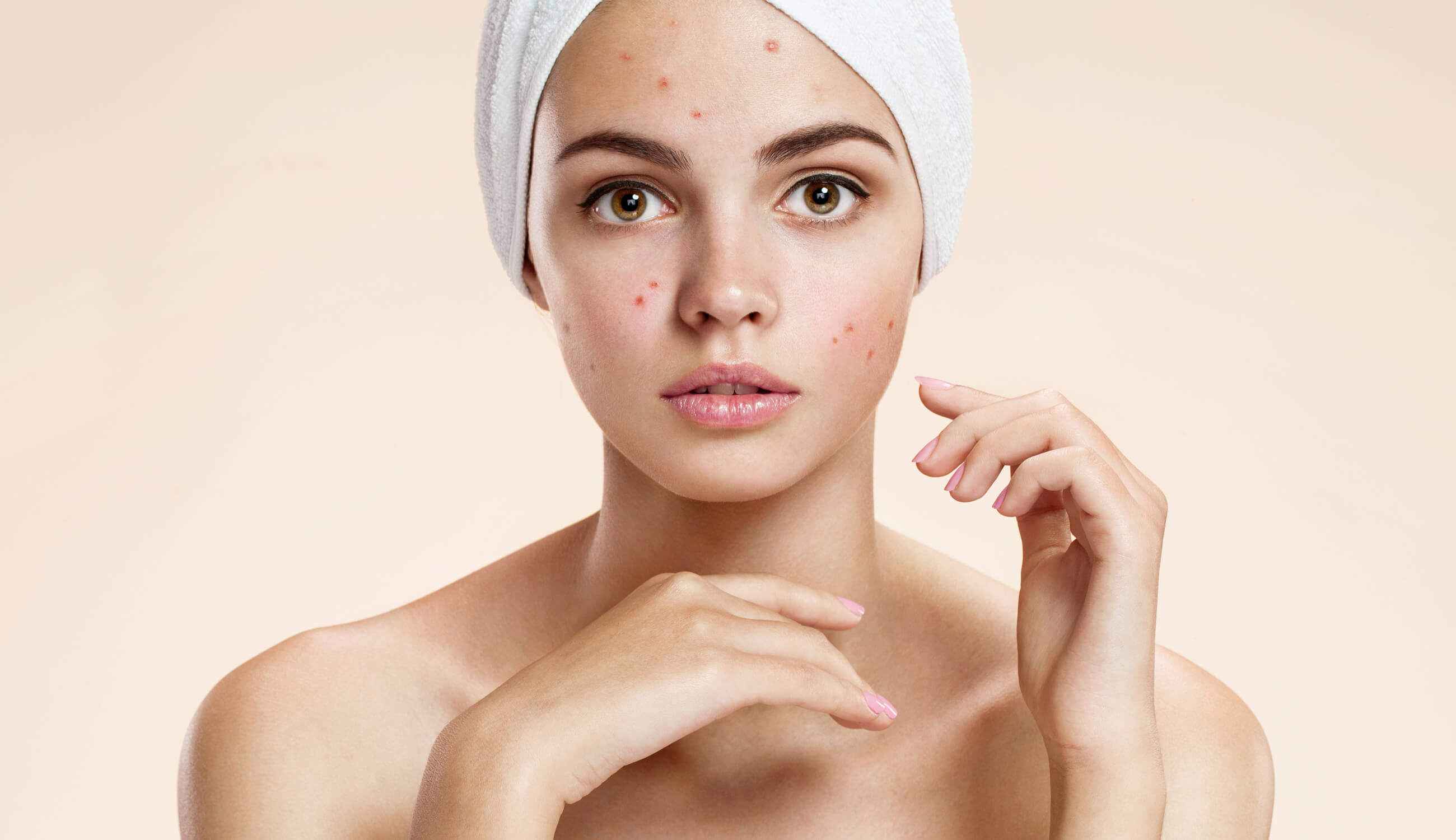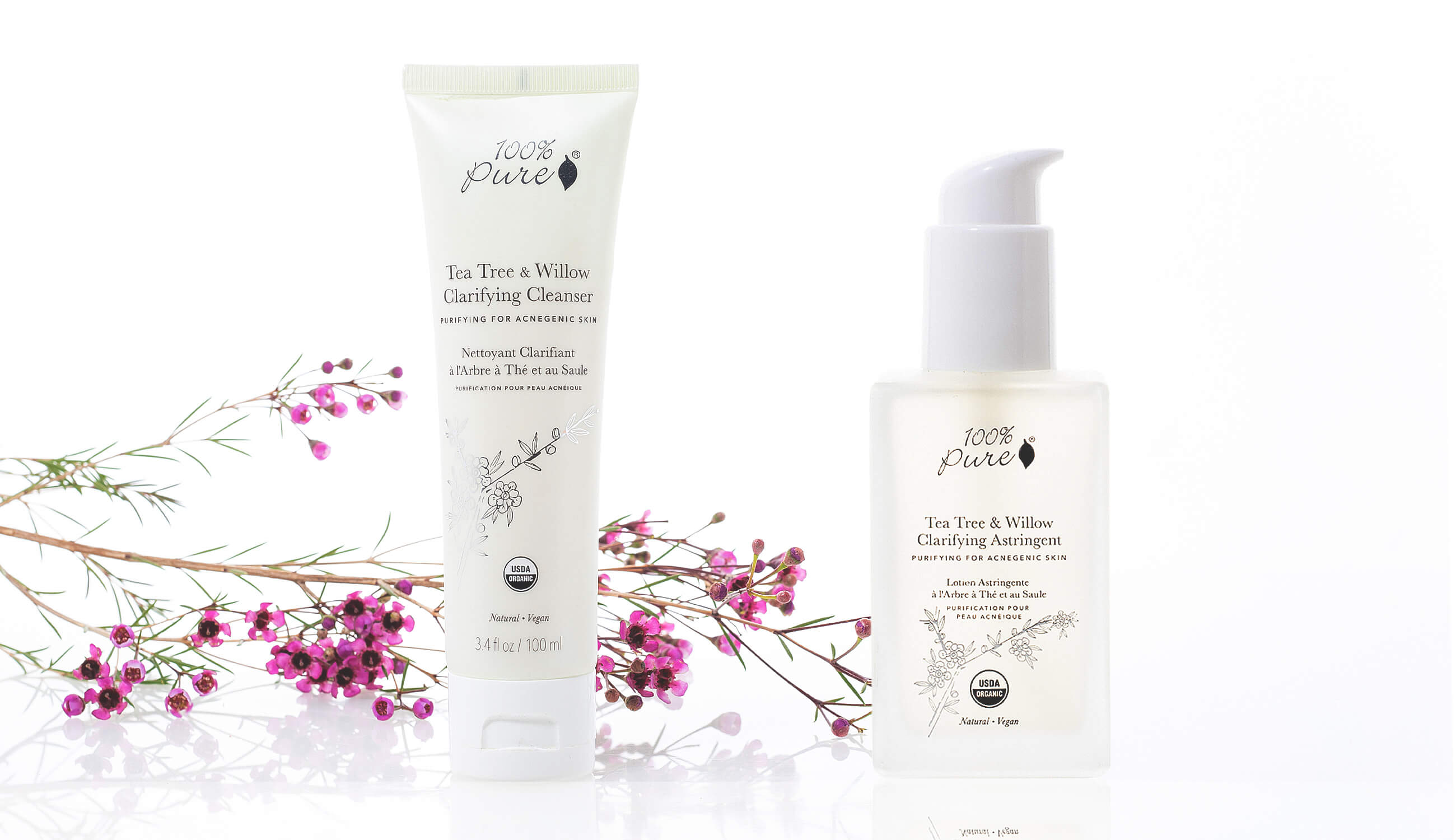Acne Treatment Basics: Salicin Vs. Salicylic Acid
Breaking down salicylic acid and its natural alternative, salicin – and determining which acne treatment is best for your skin
Doesn’t it seem like they always pop up at the worst possible times? You know who we’re talking about: those sneaky, unsightly bumps waiting to greet you at the most inopportune moments (think job interview, prom, or first date). Yes, you know of whom we speak: pimples, zits, skin demons! No matter what you call it, it’s acne – and it can be a real pain.
Whether it rears its ugly head during high stress situations or hormonal flare-ups, most of us get acne at some point of our lives. We’ll try anything to vaporize those skin nuisances, and there is no shortage of acne treatment products donning store shelves.
Chances are, most of the heavyweight acne fighters you’ll try will have salicylic acid as a star ingredient. But not all acne treatment ingredients are created equal – or are suited for your skin type. We’re diving skin-deep into salicylic acid for breakout-prone skin, who should (and shouldn’t) use it, and why salicin could be a more mild (yet effective) alternative.
When you’re perusing the skin care and beauty aisles, chances are products with salicylic acid are jumping out like a jack-in-the-box. This ingredient is in everything from face washes and masks to foundations and lip balms! Salicylic acid is a type of beta hydroxy acid (BHA) found in the bark of the willow tree, and is derived from the metabolism of salicin – an anti-inflammatory agent produced from willow bark. Today salicylic acid is commonly biosynthesized for widespread use, instead of being sourced naturally from willow bark.
The healing properties of salicin have been hailed for years, and for good reason! Salicin also contains flavonoids – which are plant compounds that reduce inflammation – and antibacterial tannins. The ancient Egyptians and Sumerians used this naturally occurring ingredient in remedies for pain, fever, and inflammation.
When ingested through powder, tea, or capsule form, salicin can treat headaches and migraines, lower fevers, and soothe the stomach. In fact, the anti-inflammatory components of salicin were later employed by Bayer in 1899 to create Aspirin: one of the world’s most frequently sold painkillers.
Are you still with us after all that scientific jargon? Great, because this is where it really gets interesting! When salicin is ingested and moves through the digestive process, it is converted by enzymes into salicylic acid. In a laboratory setting, the natural pain-relieving superstar can be chemically converted into salicylic acid – hence it being the precursor to aspirin. With the oral uses of both checked off, stick around as we’ll dive into the details on how these two Sals differ, including pros and cons for both!
PRO TIP: The use of willow bark dates back thousands of years, to the time of Hippocrates (400 BC) when patients were advised to chew on the bark to reduce fever and inflammation.
In the over-the-counter battle against breakouts, many skin care companies are using salicylic acid on the front lines of their acne treatment products. Its reputation as a seek-and-destroy army against oil and acne isn’t far from the truth, and it can certainly be useful for those with oily, acne-prone skin. But this acne treatment hero has its pitfalls, too – just check below!
PROS of Salicylic acid
Salicylic acid penetrates deep into the skin, helping to dissolve skin debris and kill pore-clogging bacteria, which then leads to acne. In addition to constricting pore diameter – helping to reduce the risk of future clogging – salicylic acid breaks down fatty compounds like the oily sebum that can clog pores. It also exfoliates and loosens old, dead skin to reveal fresher, newer skin.
CONS of Salicylic acid
We know salicylic acid is a potent skin exfoliator that reduces acne inflammation. However, many products made with salicylic acid can actually be harsher than your skin needs. Salicylic acid works well to eliminate acne-causing oil. This is because it strips skin of ALL oils, even the ones that keep your moisture barrier healthy and your skin supple and glowing.
A common myth is that salicylic acid is good for a quick fix. The truth is that it can take weeks to show results. That means more you’ll need to apply daily, creating prime conditions for excessive dryness. In fact, your skin can overreact to this dryness by producing more oil than usual! For this reason, people with skin that’s already severely dry or sensitive should completely avoid salicylic acid.
After being metabolized to salicylic acid, “acetyl” salicylic acid (as you’ll see it on the label) is the active ingredient found in aspirin. Too much or long-term use of aspirin can cause damage to the stomach lining, which could cause ulcers. It can also interact with certain medications, like blood thinners and beta-blockers, causing harmful side effects.
Though salicylic acid can help diminish acne inflammation, not everyone benefits from skin treatment with it – or should use it at all! Salicin is a more mild, yet effective, alternative to salicylic acid. With aspirin-like anti-inflammatory abilities, this salicin can be used as a natural treatment for acne and other skin irritations, and is suitable for most skin types.
PROS of Salicin
Salicin is a natural acne treatment ingredient found throughout skin care, often as a more universal alternative to salicylic acid. Much like its synthesized willow bark relative, salicin is oil soluble. This means it can deeply penetrate the skin and reach the lipid barrier to gently balance and regulate oil production.
Salicin also works as a natural exfoliant by loosening dead skin cells and clearing out pores, revealing a more radiant, clear complexion. In addition to calming redness and inflammation associated with acne breakouts, it’s also believed that salicin may have anti-aging capabilities when applied topically.
For oral use, willow bark has some benefits over its close cousin, synthetically produced Aspirin. It does not damage the stomach lining, as aspirin is known to do in some cases.
CONS of Salicin
There are some people who should not use willow bark. If you have an allergy to aspirin, it’s possible to have a reaction to willow bark as well. It can cause stomach upset and interact with certain medications, like blood thinners and beta-blockers. The tannin content of willow bark extract is particularly high, and this can leave some people feeling a little nauseous. Perhaps we should have consulted with Hippocrates!
Willow bark is blessed with many extensive, naturally medicinal properties, making it (and its key component salicin) the perfect ingredient to highlight in our natural acne treatments. When applied topically, it can lower inflammation and help to heal irritated skin. Need a few anti-acne essentials to add to your skin care routine? We’ve got you covered!
Prep your skin by washing with our Tea Tree & Willow Clarifying Cleanser. A concentration of antibacterial tea tree and willow washes away excess oil, makeup, impurities, and bacteria that clog pores and cause acne breakouts. Tone your skin with the perfect companion to our acne prone cleanser: Tea Tree & Willow Clarifying Astringent. This natural blend of nourishing herbs will soothe and clarify, while helping to prevent future breakouts. Finish up your routine with other skin care gems suitable for acne-prone skin!
We know acne treatments can be stressful, or feel like a chore when they don’t deliver on results or aggravate already-angry skin symptoms. The good news is that gentler natural acne treatment exist, and can work to keep acne at bay while you fight a win-able acne battle. Want more info on natural acne treatments, masks, or helpful ingredients? How about acne-friendly makeup? Check out our blog to get the latest on these topics and more!
We carefully hand-select products based on strict purity standards, and only recommend products we feel meet this criteria. 100% PURE™ may earn a small commission for products purchased through affiliate links.
The information in this article is for educational use, and not intended to substitute professional medical advice, diagnosis, or treatment and should not be used as such.





